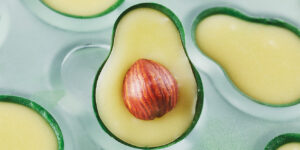Categories Pastry Chef Articles
Discover the full potential of macambo, cacao’s unknown “brother,” with David Chamorro and Christian Domínguez
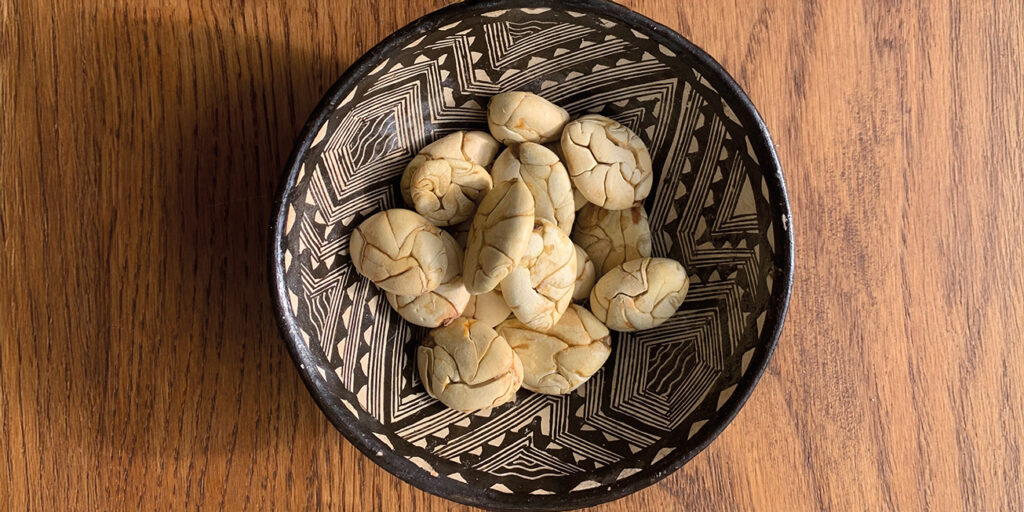
Food Idea Lab is one of Spain’s leading centers for culinary research and creativity. In so good.. magazine #33, its founder, chef David Chamorro and Christian Domínguez (no longer working there), delve into a new product that opens up endless possibilities for pastry and chocolate making: Theobroma bicolor, also known as patasmuyu, jaguar cacao, white cacao, or macambo.
It is a fruit closely related to cocoa that is usually discarded, despite having great potential as a new chocolate coating or processed as a nut.
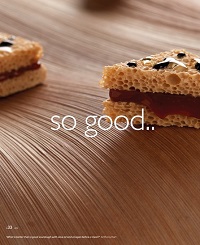
Discover so good.. magazine #33
What is macambo?
Macambo is a native species with deep roots in the Amazon rainforest. This plant is found in countries such as Colombia, Ecuador, Brazil, Peru and Mexico, thrives between 0 and 1,000 meters above sea level, embracing warm climates with annual temperatures between 28 and 30°C and rainfall ranging between 2,500 and 4,000 mm.
As for the fruit, the berries are ellipsoidal or oblong, with a woody, robust peel. The pulp reveals yellow tones, a creamy texture and an acidic touch. The seeds, the heart of this Amazonian jewel, are elliptical and flattened, wrapped in a white and coffee-brown fibrous aril.
Macambo versus cacao
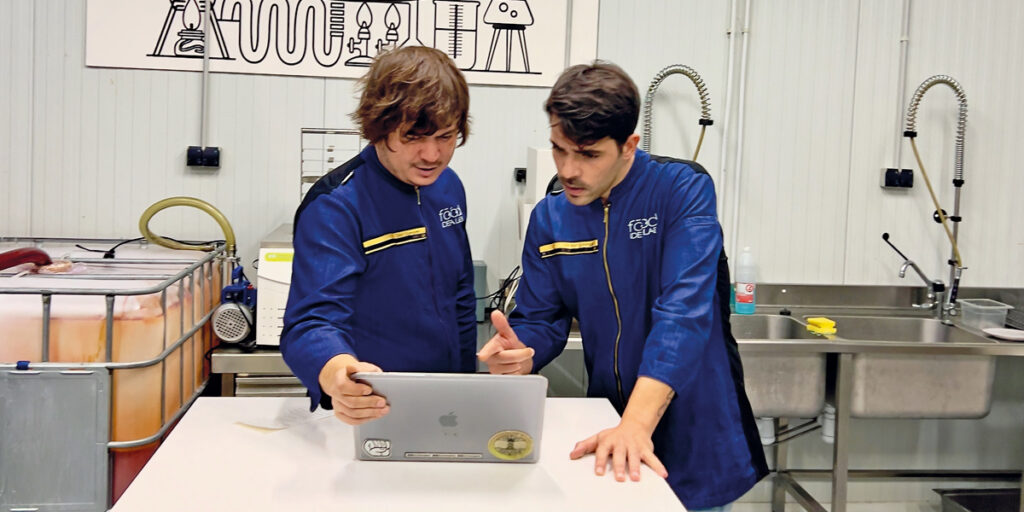
This fruit belongs to the Theobroma family. Therefore, it is closely related to cocoa, but there are a few differences between the two. First of all, the height of the trees: while cocoa trees can grow up to 12 meters, in the case of macambo they can grow up to 25-30 meters. This even changes the method of harvesting the fruit: cocoa is harvested directly from the tree, while macambo is harvested from the ground.
It should also be noted that, unlike cocoa, macambo mucilage develops unpleasant flavors when fermented. For this reason, the process followed with this fruit is totally different from that of cocoa. Right after harvesting, the fruits are opened and the mucilage is removed from each bean. In addition, the macambo is roasted on the same day, because if we wait any longer, the flavors change.
Three professional applications for macambo
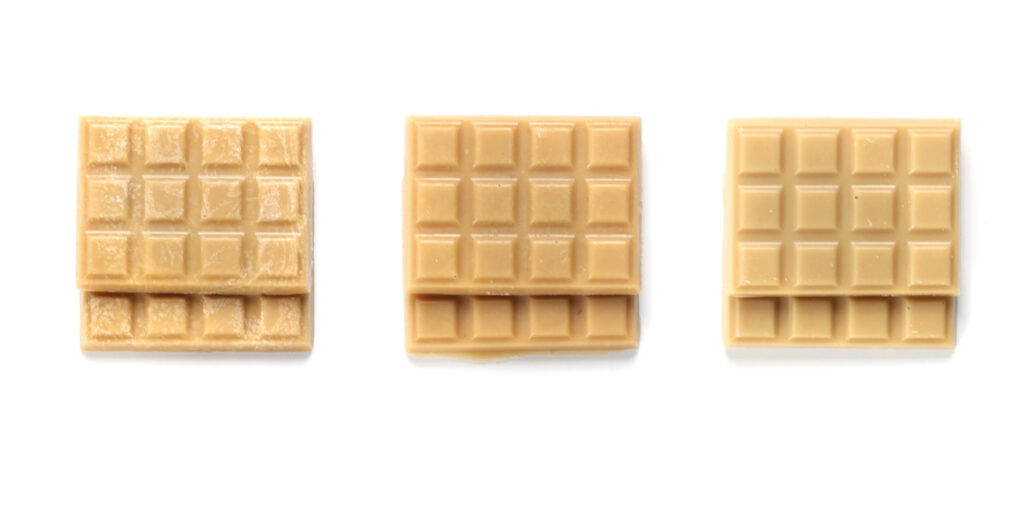
After analyzing the unique properties of both the butter and the flour from this fruit, Chamorro offers three practical applications of macambo:
- Pure macambo paste, working the fruit as if it were a nut. We roast the beans, grind them in a Thermomix to heat their inner fat and obtain a paste, and finish refining them in a melangeur with the friction of the stones. In this case, we approach the product as if it were a ‘pure paste’, looking for its purity, with uses more typical of nut pastes or chocolates with a high percentage of cocoa.
- Macambo chocolate, with 75% content of this fruit and the addition of cocoa butter (10%) and sugar (15%).
- Macambo couverture, with 75% content of this fruit in order to find a versatile and functional profile that can be used in different pastry and confectionery techniques. The result is what we could call the first white couverture, which evokes white chocolate but with greater organoleptic complexity and without the addition of animal proteins or common industry allergens, such as nuts, milk and gluten.
Six Pastries That Showcase the Versatility of the Macambo
In so good.. magazine 33, Chamorro also presents various classic pastries and chocolate creations to showcase the versatility of the macambo.
Molded bonbon
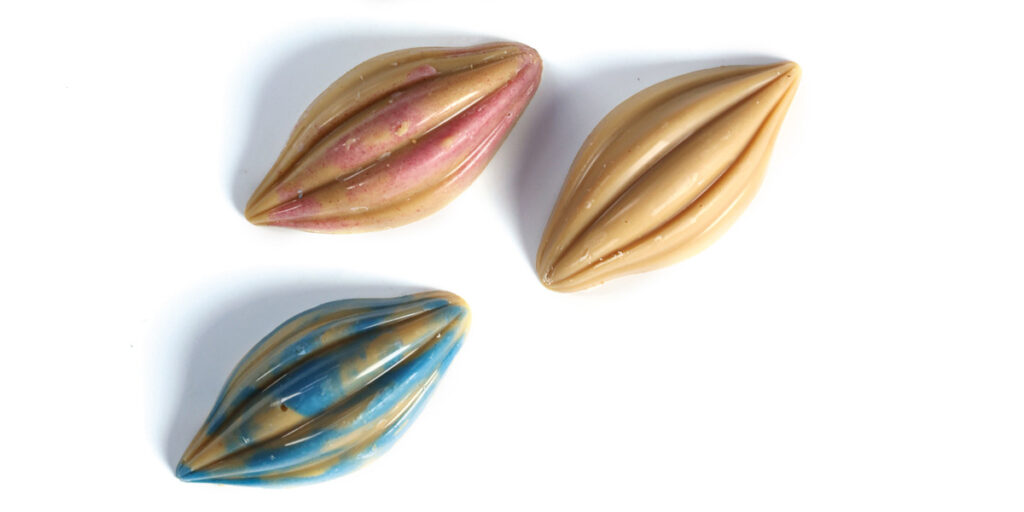
Focusing on the world of chocolate, we have prepared from bars to molded and enrobed bonbons with macambo couverture. We work on the tempering of the macambo 75% couverture respecting its characteristics and similarities with chocolate couvertures with a high percentage of dry extract. The fluidity of this couverture is excellent for technical uses, and especially bonbons.
Vegetable ganache
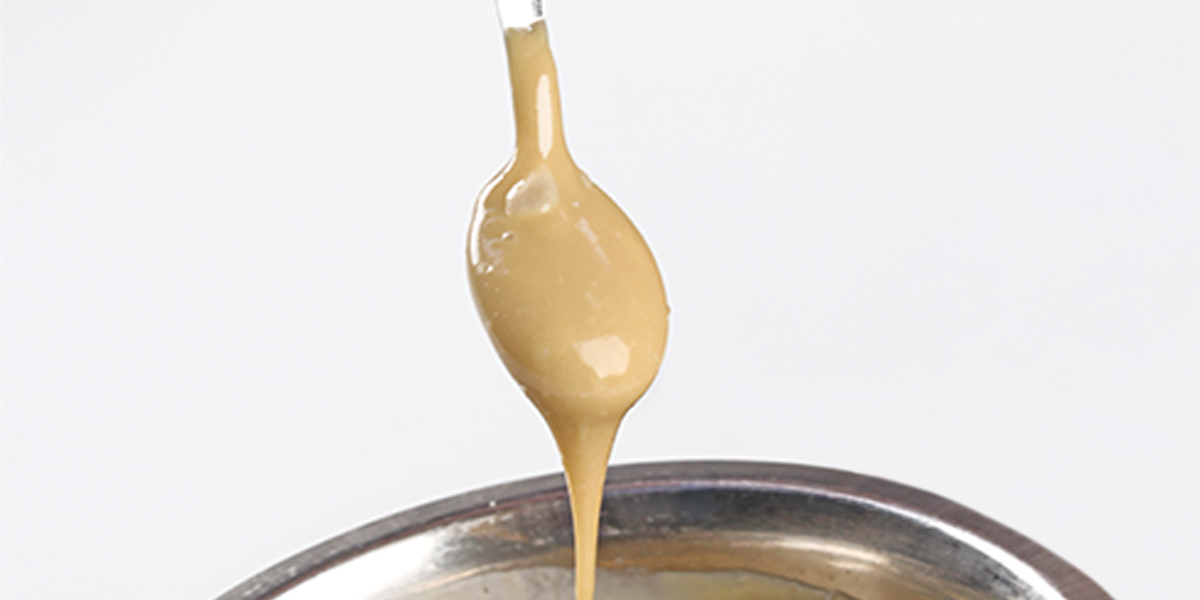
This is an adaptation of an emblematic pastry preparation – the chocolate couverture emulsion with a dairy base. This time we start from a macambo couverture, ideal for those who are lactose intolerant and vegans. Therefore, understanding the importance of this factor, we decided to formulate the ganache using also the macambo vegetable milk. This also reinforces the purity of the product. Macambo milk has a slightly creamy texture and a clear herbaceous, vegetal profile, reminiscent of marcona almond milk. In addition, this milk has a high nutritional value in vitamins and is a rich source of vegetable protein.
The result is a vegetable ganache, reminiscent of a Valrhona white chocolate, not at all cloying and with a pleasant firmness and creaminess, thanks to the melting points of the macambo fats.
Discover the recipe in so good.. magazine #33
Praliné
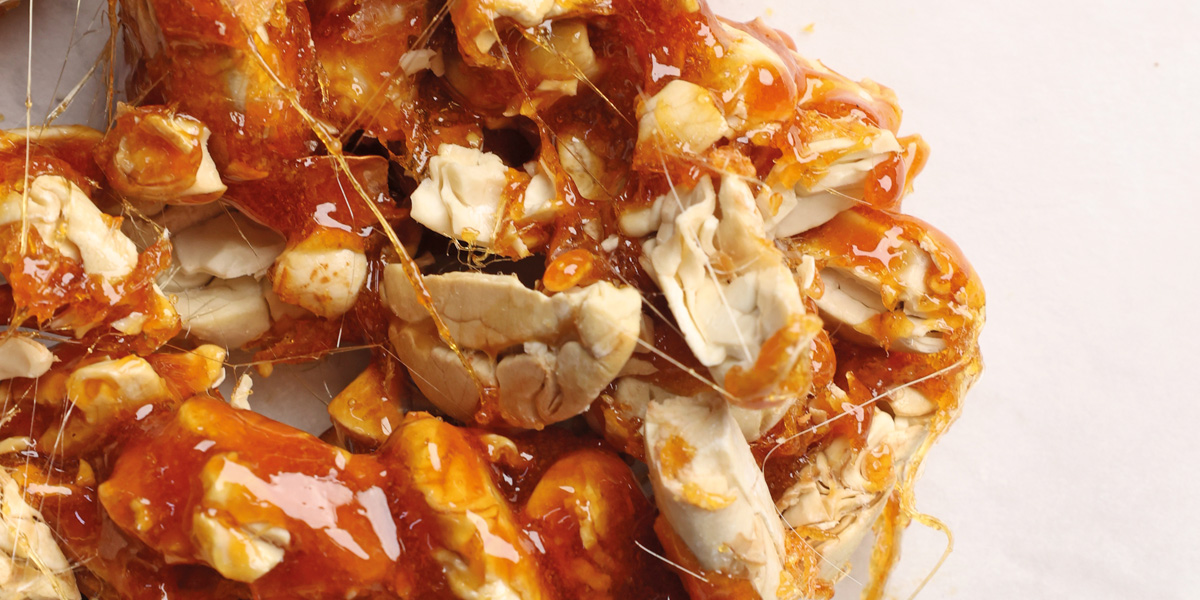
We consider Theobroma bicolor (macambo) beans not only as a chocolate couverture but also as a new and exotic nut. To show the versatility in this other way, we use the beans as a base for a praliné.
The result is juicy and creamy, with an aftertaste somewhere between the toasted caramel and the herbaceous profile of the macambo. The potential is enormous. For example, by emulsifying this praliné with macambo couverture (40% praliné and 60% couverture), a 100% macambo gianduja is obtained, vegan and suitable for lactose intolerant people, creamy and with an accentuated aftertaste.
Discover the recipe in so good.. magazine #33
Vegan toffee
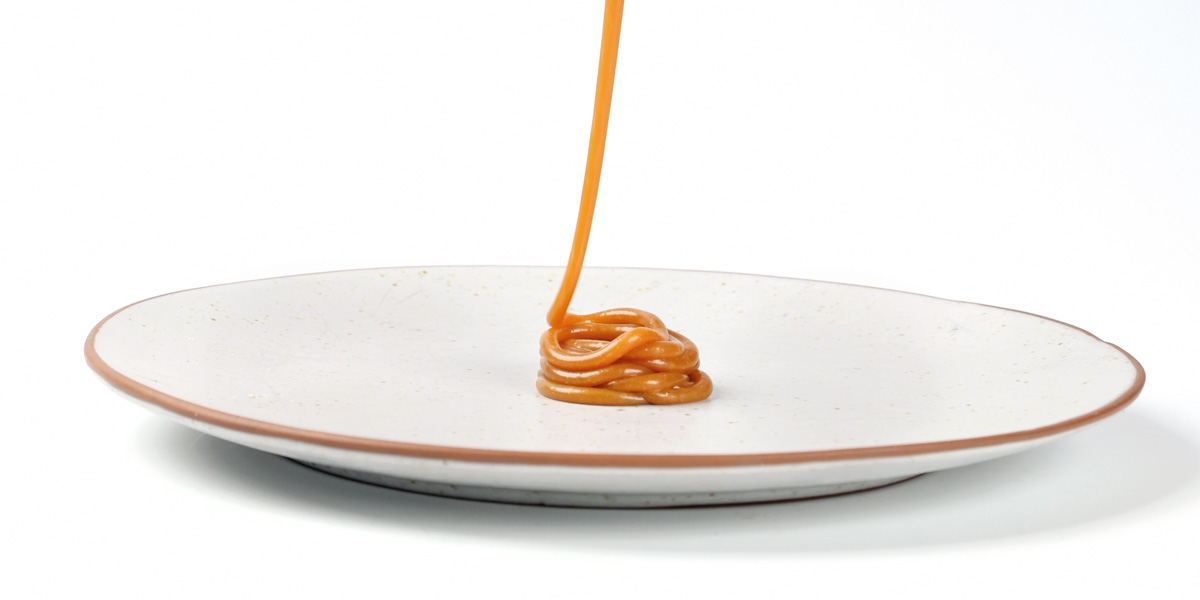
Inspired by the results obtained with the vegetable ganache, we decided to elaborate a classic toffee with a blond caramel base and vegetable macambo milk, enriched with cocoa butter and seed oil. The result is a preparation suitable for lactose intolerant people and vegans, with an herbaceous profile that balances the characteristic sweetness of toffees.
Discover the recipe in so good.. magazine #33
Classic mousse
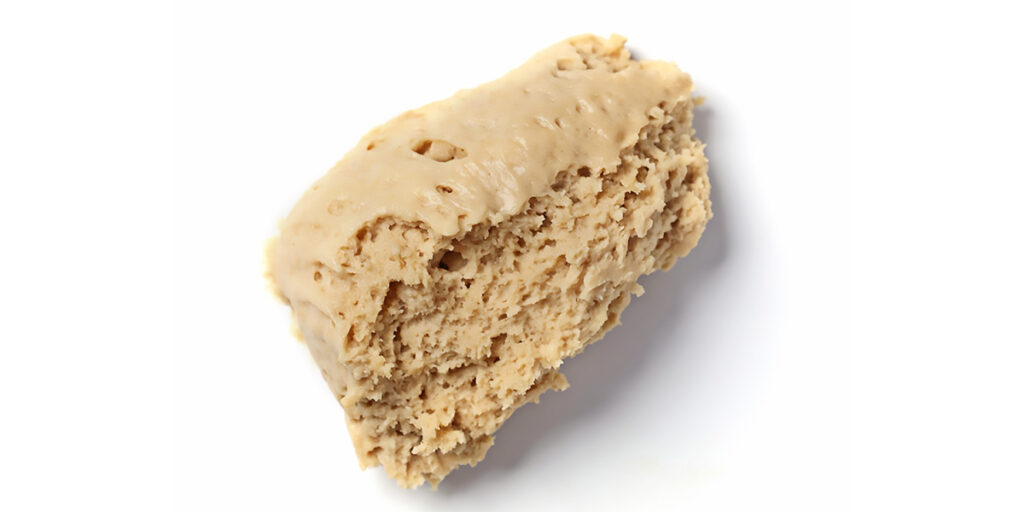
We propose the possibility of making a classic mousse with a French meringue base by replacing the chocolate with the macambo 75% couverture. Due to the rapid cooling of the fat in the macambo couverture, which crystallizes and hardens quickly in the refrigerator, it is necessary to work the mousse quickly and with determination.
The result is a mousse with a blond couverture coloring and an excellent airy, juicy structure, which gradually melts in the mouth. Its creaminess is pleasantly embracing and far from cloying, with a distinctive aftertaste of the couverture, reminiscent of roasted marcona almonds and high quality, intensely flavored peanuts native to Ecuador.
The good structure is due to the fat, fiber and protein percentages of the macambo. In fact, the protein and fiber allow even ruling out the use of gelatin to achieve the characteristic texture of a mousse.
Discover the recipe in so good.. magazine #33
Financier
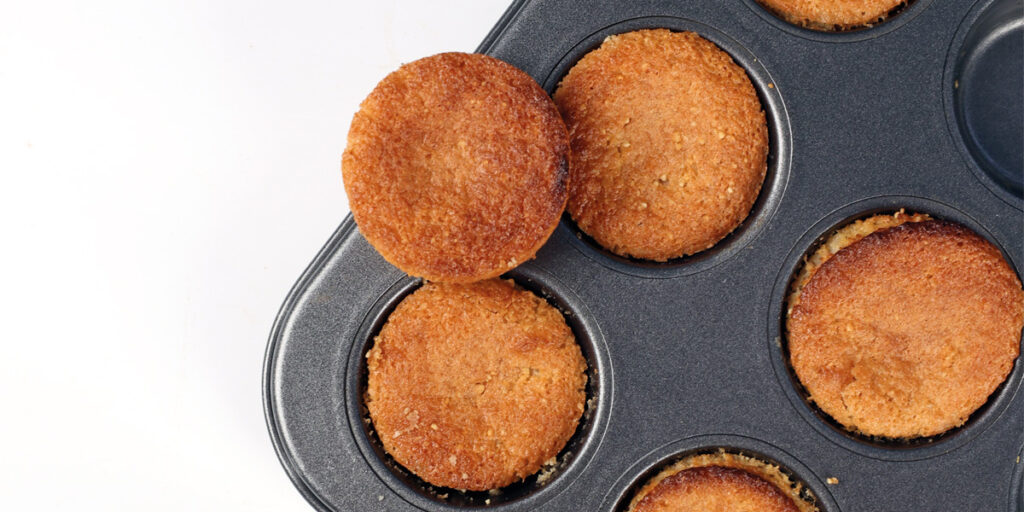
To test the versatility of macambo flour, we opted for a classic financier, replacing almond flour with this new product. In the formulation of the recipe, we adjusted the added fat, to take into account the
fat already provided by the macambo flour and avoid an excessively fatty final product. In addition, the baking requires a lower temperature range than the classic financier and a longer baking time. This ensures that the batter does not remain underbaked inside.
At the organoleptic level, this financier has a herbaceous aroma, accompanied by greater moisture and an embracing caramel feeling in the mouth due to the vegetable protein of the macambo
Discover the recipe in so good.. magazine #33

